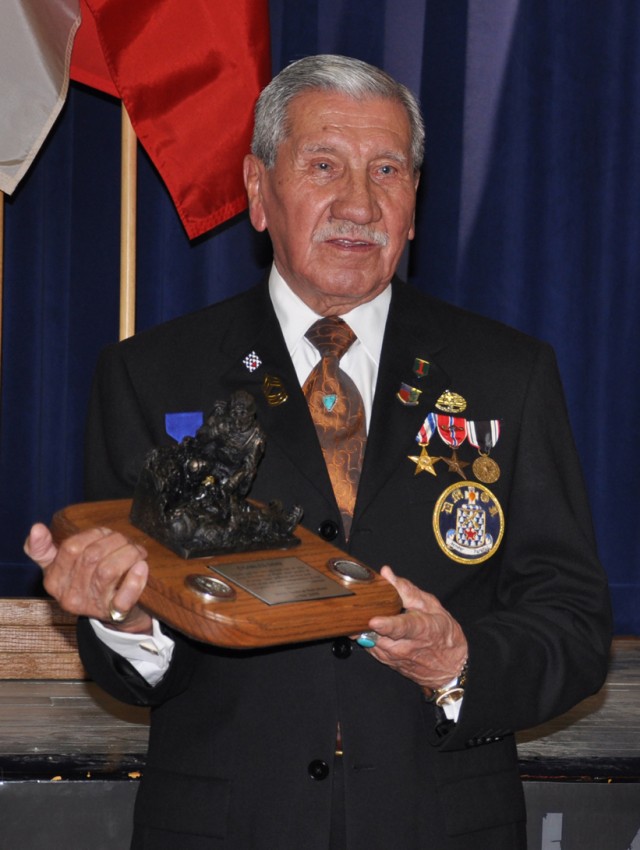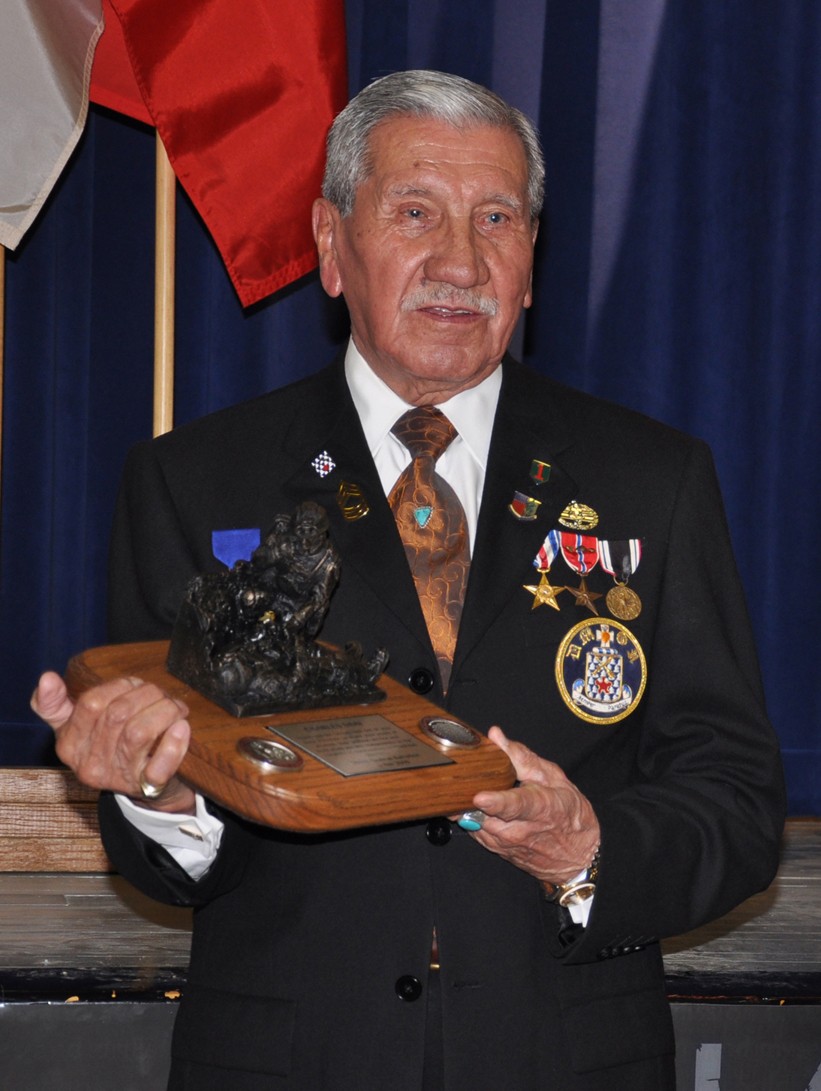
FORT SAM HOUSTON, Texas -- The 32nd Medical Brigade, hosted by the 264th Medical Battalion, kicked off Fort Sam Houston's National American Indian Heritage Month celebration with a reception Nov. 5 at the Hacienda Recreation Center followed by a presentation titled "The Meaning of being a Medic in Combat," by Penobscot Elder Charles Shay.
Drafted into the Army in 1943, Shay, a highly-decorated retired combat medic, saw his first action on the beaches in Normandy, France, on D-Day, his first assignment.
"My baptism came on the most devastating day for medics during the entire war," Shay said to the gathering of about 250 Soldiers in the audience. He was part of the first wave of Allied troops to land on the beach code-named "Omaha" during one of the bloodiest battles of WWII.
"Seven medics in my regiment were killed, including some who were probably drowned. In addition, 24 medics were wounded."
The D-Day Museum in the U.K. estimates 2,000 casualties at Omaha Beach, June 6, 1944.
When the ramp of his landing craft dropped, bullets flew around him and men were shot and killed before they could move. He said he told himself to just keep going, wading into the waist-deep water where he made it ashore dragging two satchels of medical supplies and equipment.
Shay found shelter behind a small dune and immediately began helping the mortally wounded. When he looked back toward the water, he saw more wounded Soldiers loaded with weapons and ammunition unable to get to the beach. They were drowning.
According to his Silver Star citation for bravery, Shay completely disregarded personal safety to repeatedly plunge into a treacherous sea carrying those critically wounded men to safety that day.
Shay continued to aid wounded Soldiers during the Korean War, earning the Bronze Star with two Oak Leaf Clusters and a second Bronze Star with "V" device for valor.
Amazingly, Shay never was wounded. "I am a great believer in a spiritual way of life and I know that my mother's prayers must have guided me. Through her prayers I was able to survive."
Out in the trenches he said he mulled over deep questions about life, why he was put on the earth. "Being a combat medic is a very special privilege. I have always been proud to be a medic and I felt that I was doing something good for other people," Shay said.
He still gets emotional when thinking about friends and fellow Soldiers dying in combat. Shay's voice falters as he described responding to "Pop's" call for help during the Battle of HAfA1/4rtgen Forest in Germany. Pop, an older Soldier who took the younger ones under his wing, was badly wounded by shrapnel in a foxhole under a barrage of artillery exploding in the tree tops.
"When I reached the foxhole and looked down, I saw my old friend Pop suffering from a very bad stomach wound and beyond any help I could give him. After returning to the [command post] and reporting the incident, I almost had a breakdown. There were other incidents like this, but this one made an especially deep impression on me.
Even if they were not friends you don't forget about them. I feel sorry for the young men that had never experienced life the way it was meant to be and have to die."
Shay was promoted to master sergeant, left the Army but joined the Air Force and participated in the atomic bomb test in the Marshall Islands. He retired from the military in 1964, worked with the International Atomic Energy Agency and later for the United Nations High Commissioner of Refugees.
He met French President Nicolas Sarkozy in Washington D.C. earlier this year. Sarkozy thanked the Penboscot Nation and put a medal around Shay's neck, inducting him into France's National Order of Legion of Honor for his heroism on D-Day.
"American Indians and Alaska Natives have made significant contributions to our Army with Indian Scouts of the Old West that worked with our U.S. Calvary, the code talkers of WWII, Alaska Scouts, and the brave American Indian and Alaska Native Soldiers now serving in Iraq and Afghanistan," said Lt. Col. Scott Fischer, commander 264th Medical Battalion.
"Even before they were recognized as U.S. citizens, as many as 12,000 fought in WWI, 44,000 enlisted during WWII, in fact in WWII Native Americans were awarded two medals of honor, 51 silver stars, 34 distinguished flying crosses, 47 bronze stars and 71 air medals. During the Vietnam War 42, 000 Native Americans served in the military, the majority being volunteers," Fischer said.
"It's a great way to learn about other people and cultures," said Sgt. 1st Class Lance O'Neal, 32nd Medical Brigade's equal opportunity advisor.
"We're a diverse Army and coming to these events can help Soldiers learn about a particular group and its culture. It's a great avenue to educate Soldiers, give them a piece of history they may have not heard yet. It's celebratory too."

Social Sharing